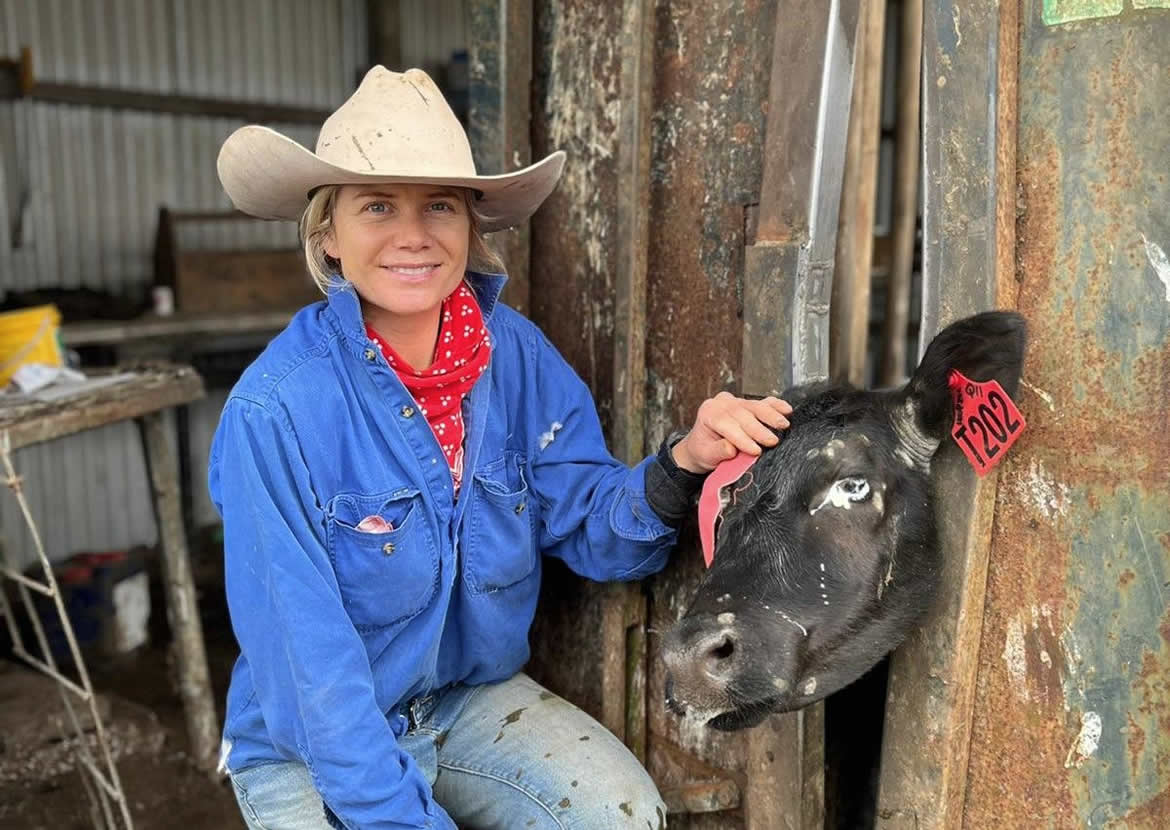Sustainable farm management goes hand-in-hand with improving productivity and profitability at Greenham’s grassfed beef property, Westmore.
Snapshot
| Property | Westmore |
| Area | 3,400ha |
| Business | Grassfed beef for Greenham premium programs |
| Livestock | Finishing 6,500 head annually including 3,000 F1 Wagyus and 3,500 British breed cattle plus 250 breeders |
| Pasture | Ryegrass and clover |
| Soil | Sandy peat and loam |
| Rainfall | 1,200mm/year |
Key points
• Goal to increase stocking rates over next five years from 6,500 to 7,500
• Lime sand application trials have improved soil pH by an average of 0.5 and increased pasture length up to 70%
• Induction process addressing mineral deficiencies has improved live weight gains and temperament
• Summer fodder crops planted as part of pasture renovation program and sown back down in autumn to more permanent ryegrass and clover pastures has improved pasture resilience to rust and autumn ill-thrift
• Bores have replaced dams to improve cattle drinking water quality, increasing live weight gains and compliance to MSA.
The 3,400ha property in north-western Tasmania is run by manager, Aiden Coombe and his team of four full-time staff.
Westmore finishes around 6,500 cattle a year including 3,000 F1 Wagyus and 3,500 British breed cattle, as well as a breeding herd of 250 self-replacing cows.
Cattle are drawn from right across southern Australia, sourcing steers and heifers weighing around 380kg. Finished steers are turned off around 600kg and heifers are finished at about 500-550kg live weight.
“Everything we do is about improving the land and increasing productivity so at the end of the day we’re producing better beef and more of it,” Aiden said.
Improving soil health
Due to the region’s high annual rainfall, Westmore’s soils are prone to high levels of acidity.
Most plants and micro-organisms have defined ranges of pH for optimal growth. The optimal range for plants is between 5.5 and 8. In acid soils:
• aluminium becomes toxic to many plants
• microbial activity decreases
• nodulation and nitrogen fixation are decreased in legumes
• plant nutrients can become deficient, particularly phosphorus, nitrogen and sulphur, as well as micro-nutrients.
• To improve soil acidity and ground cover, a three-year trial was conducted where 12t/ha of lime sand was applied to test plots.
“We saw an average pH increase of 0.5. Our goal is to reach a healthy range of 5.7-6,” Aiden said.
“If we aim for around pH 6 it gives us room to move as our high annual rainfall means our soils are susceptible to waterlogging and increased acidity.”
To achieve this goal, Aiden said lime sand application would continue at 12t/ha with one-third of the farm receiving treatment each year for the next three years.
“Westmore is a grass-driven enterprise; healthier soils means better ground cover and improved pasture quality, which will help increase our stocking rates,” he said.
“Our goal is to go from finishing around 6,500 to 7,500 head within the next five years.”
Lime sand trials revealed a 70% increase in pasture length, and dry matter production increased by an estimated 1,200kg/ha compared to no treatment.
Rotational grazing and securing access to clean water
Cattle are rotationally grazed in mobs of around 280-300 head and moved to fresh pastures every three days.
To ensure constant access to clean drinking water, bores now feed troughs in every paddock.
“We’ve fenced off our dam and dug three underground bores with another being dug now so all farm water will be fed by reticulated bore water,” Aiden said.
Addressing mineral deficiencies
Soil and early liver testing trials in early 2020 revealed a “dramatic lack” of minerals, particularly copper and selenium, in the Westmore herd.
Deficiencies in minerals such as copper and selenium can cause:
Copper deficiency: rough and faded coat, poor growth and diarrhoea.
Selenium deficiency: stiff-legged gait, poor growth and sudden death.
“The mineral deficiencies were largely caused by our soil types [at Westmore] and how prone they are to waterlogging as minerals aren’t carried through the soil,” Aiden said.
To combat these deficiencies, Aiden said a trial induction process was developed in consultation with their local veterinarian, which all incoming cattle receive within their first two weeks at Westmore.
The induction includes three boluses, an oral liver fluke drench and a seven-in-one vaccination, followed by a drench and shot of B12 after three months.
“We’ve seen a dramatic improvement in the trace elements being held in the cattle’s systems, which has led to improved temperament, live weight conversions and compliance results,” Aiden said.
“Visually you can see their coats appear cleaner and shinier too.
“Every farm is so different and the cattle’s wants and needs can change with time and seasons so the aim is to develop a program that is as simple and efficient as possible.”
Maintaining ground cover year-round
As part of Westmore’s ongoing pasture improvement program Aiden said 150- 200ha of fodder crop is planted in spring, in different parts of the property, to break up heavy weed mats, aerate soils and improve pasture resilience.
500 head are finished on the mixed chicory, clover and oats crop during the summer months.
“We are ramping up the size of the plantings each year as we can see the benefits of newer pastures that are less susceptible to rust and autumn ill-thrift, which can really effect live weight gains and grading results in autumn,” Aiden said.
Aiden said they also planned to plant shelter belts in early spring using plants that are native to the area and resilient to local weather conditions.
The advantages of shelter belts include:
• protect livestock and groundcover
• reduce soil erosion
• control salinity
• improved biodiversity.













